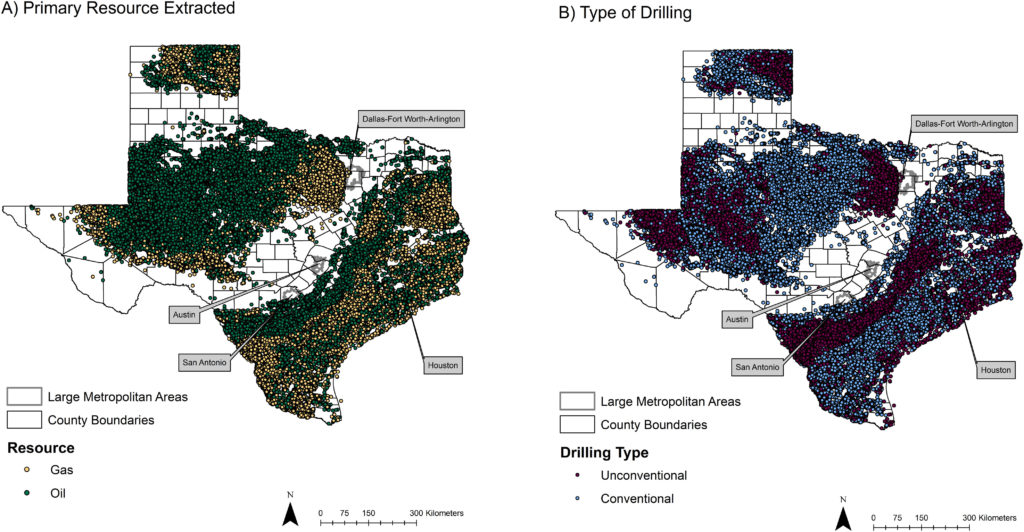An environmental health perspective on oil and natural gas extraction may produce environmental pollution at levels that affect reproductive health of nearby populations. According to this article, “Residing near oil and gas drilling sites during pregnancy was associated with a small reduction in term birth weight but not SGA, with some evidence of environmental injustices. Additional work is needed to investigate specific drilling-related exposures that might explain these associations.” https://doi.org/10.1289/EHP7678.

Note: Each dot represents a single drilling site that was spudded between 1 January 1985 and 28 June 28, 2019 using information from the Enverus DrillingInfo database (n=356,527 total records). Drilling sites that contribute to the study exposure metrics are a subset of what is shown. Due to the density of drilling sites in some areas of Texas, there is overlap in the points in the figure. (A) Spatial distribution of drilling sites by primary resource extracted (36.5% gas, 63.5% oil), 1985–2019; (B) Spatial distribution of drilling sites by type of drilling (71.9% conventional, 28.1% unconventional), 1985–2019.